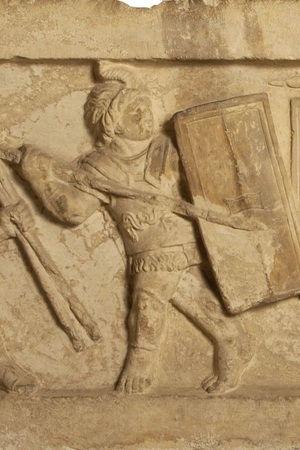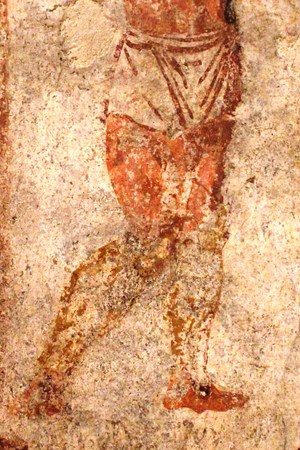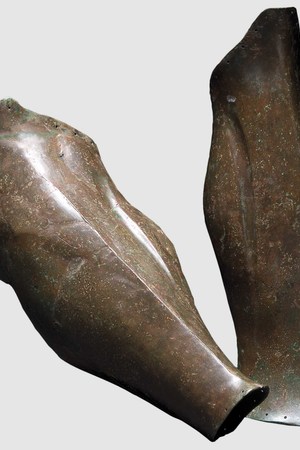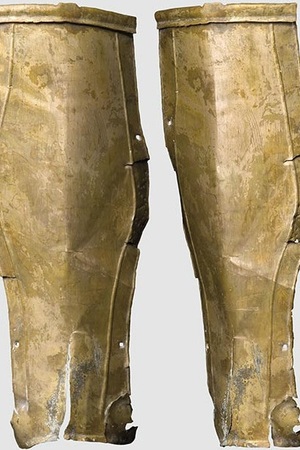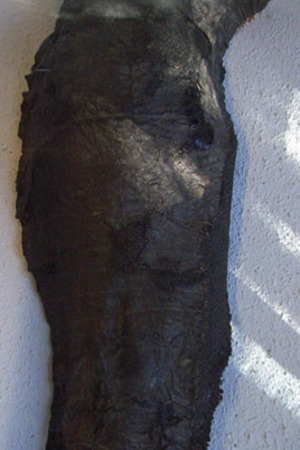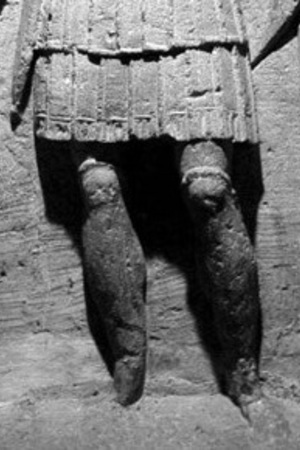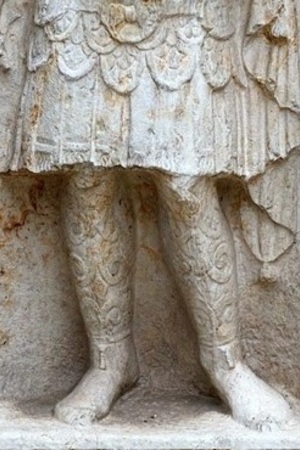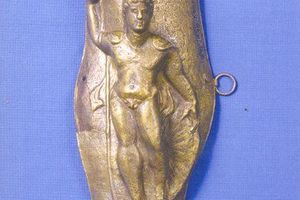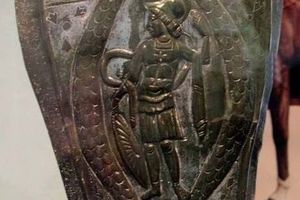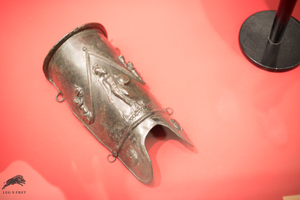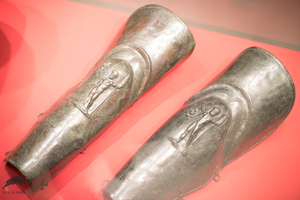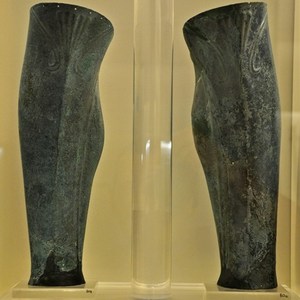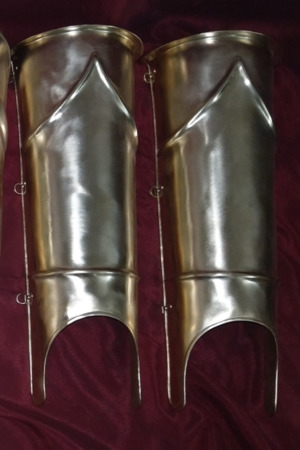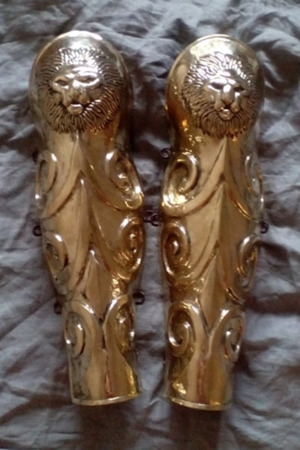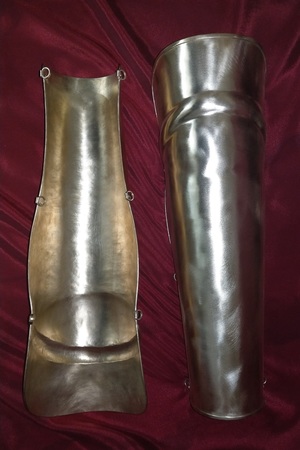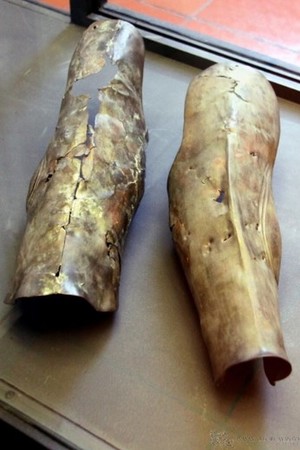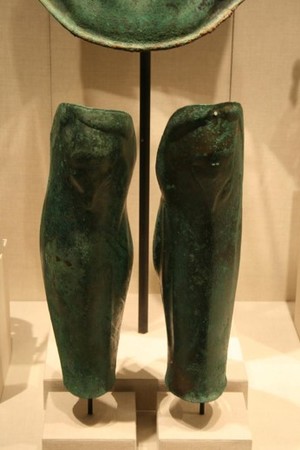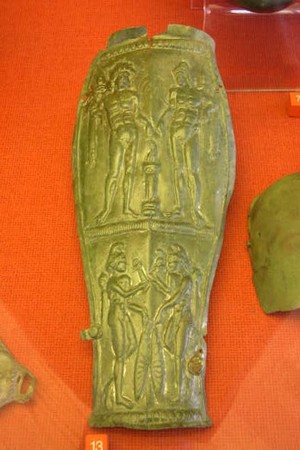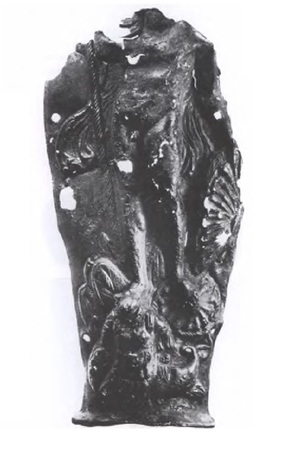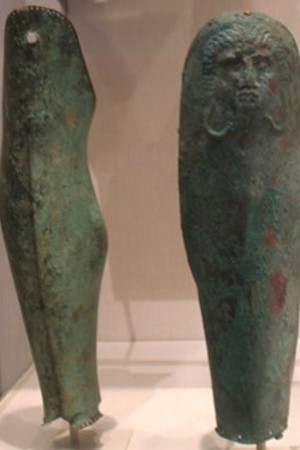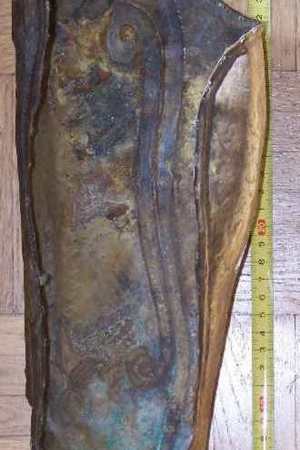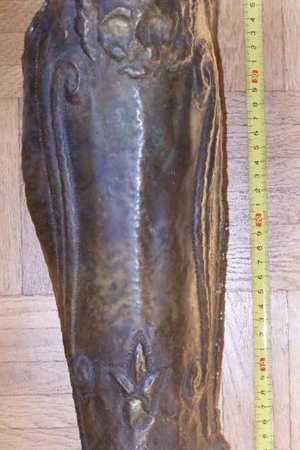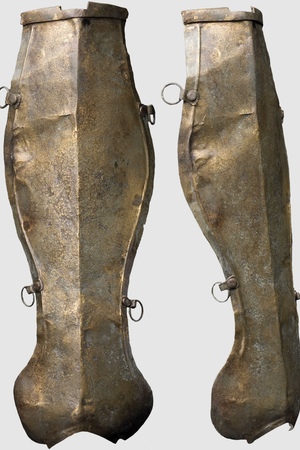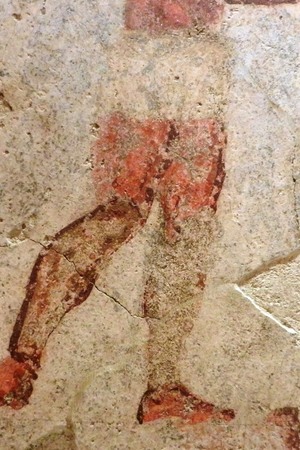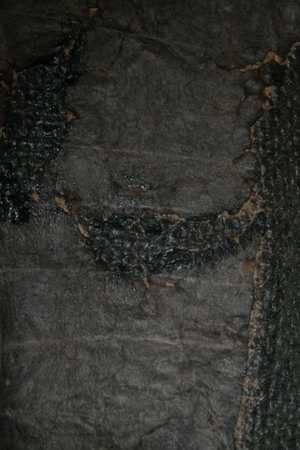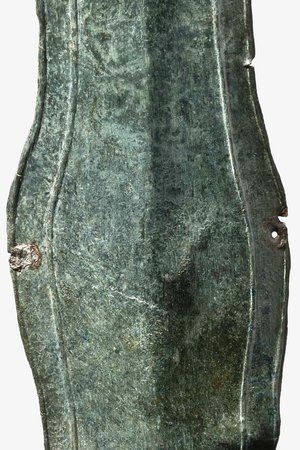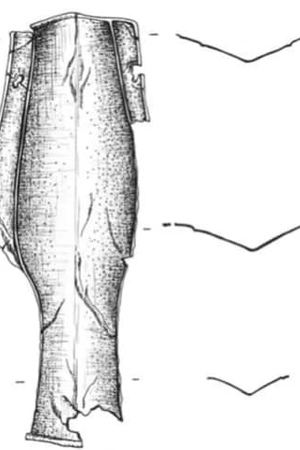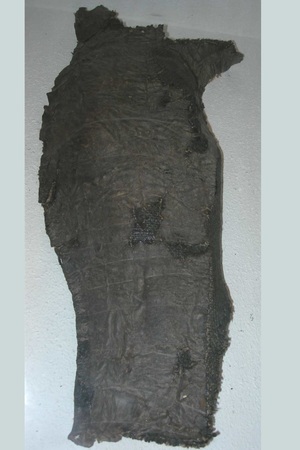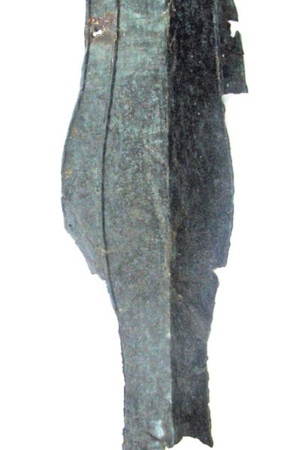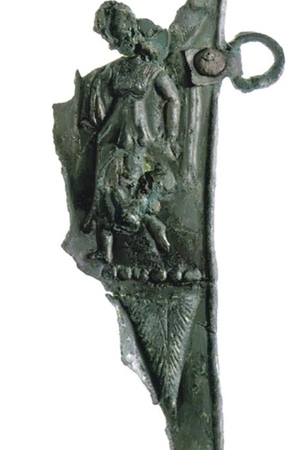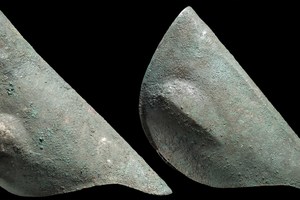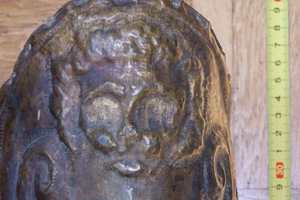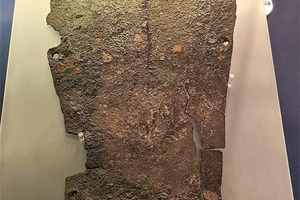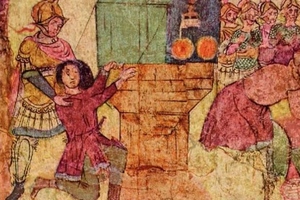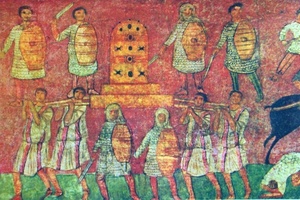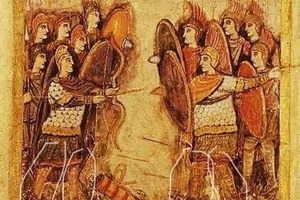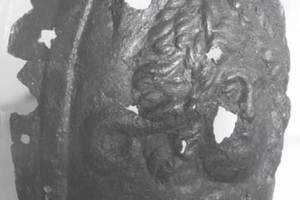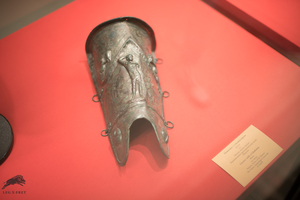Ocrea
Ocrea (or greaves) — is a type of ancient armor that protects the front of the leg. The length of the greave and the areas of protection could vary. The greaves were tied to the leg with laces or straps with buckles, often a leather or fabric lining was glued into them, or the leg was wrapped in fabric before putting on the greave. Greaves were widely used in the ancient world, particularly in Greco-Roman culture. They came to the Roman army from Greece, where they were actively used by hoplites. Because of the shape of the hoplon, Greek warriors had exposed legs that needed to be protected, which contributed to the spread of greaves in the Greek army. In their type and structure, Roman greaves are similar to Greek ones. In the Roman army, greaves were worn by legionnaires, centurions, and horsemen, as well as gladiators.
Greaves in the Roman Army
In the Roman army, the use of greaves began in the Republican times, they were actively used among rank-and-file soldiers. However, over time, greaves almost completely disappeared from legionnaire equipment, and by the beginning of the principate era, they remained attributes of cavalry and centurions. This was likely due to the specifics of Roman tactics, which did not allow legionnaires to be effectively hit in the legs.
At the beginning of the 2nd century AD, greaves reappeared in legionnaire equipment. The earliest confirmation of the use of greaves in the Empire times is Trajan's trophy. Interestingly, legionnaires, like provocateurs, wore only one greave, worn on the leg on the shield side. This type of greave does not cover the knee, unlike the greaves of Greek hoplites, which is related to the height of the scutum. There was practically no sense in covering the knee. Greaves dating back to the 2nd century AD have been found, made of bronze alloys, there are also finds made of iron. According to iconographic and narrative sources, Roman soldiers wore greaves in the 3rd, 4th, and 5th centuries AD.
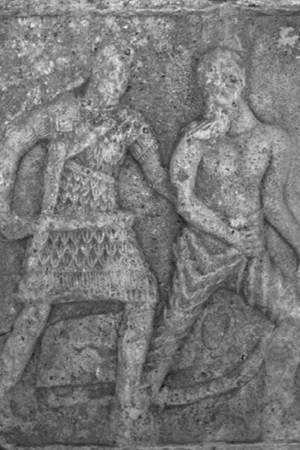 Bas-relief from Adamklisi. On the legionnaire's right, you can see the outline of a greave. Early 2nd century AD
Bas-relief from Adamklisi. On the legionnaire's right, you can see the outline of a greave. Early 2nd century AD Centurions are depicted much more often in greaves on bas-reliefs. Always worn on both legs, richly decorated with embossing, greaves were of an anatomical type and reached to the knee, like those of the Greeks. Centurions often had to fight out of the main line, which resulted in the highest mortality rate in the Roman army among them.
Horsemen in the Roman army also wore greaves, as there was an acute need to protect the legs. Blows mainly came from below, the shield was small, there was no formation. All this led to vulnerability in hand-to-hand combat, and greaves often saved their owner. Horsemen, being wealthy people, could afford richly decorated armor, including expertly forged greaves.
There are many archaeological finds of presumably equestrian greaves, which have rich embossed decor. The main material from which such greaves are made is bronze alloys, specimens with silver plating are found. Both short greaves and knee-protecting ones have been found, with composite cups attached on hinges.
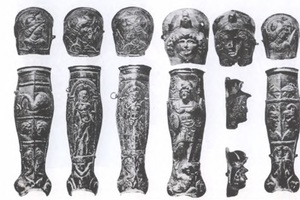 Greaves from Straumbing (Sorviodudum). Bronze. Hauboden Museum. Germany. First half of the 3rd century.
Greaves from Straumbing (Sorviodudum). Bronze. Hauboden Museum. Germany. First half of the 3rd century.Greaves for the emperors
Greaves at the highest military ranks by the era of the principate were almost completely out of use, and are beginning to occur much less frequently. However, there are sources for the use of greaves by Emperors in the second century AD. Most likely, this is more a sacramental image of the emperor in a warlike way than a real functional application of greaves.
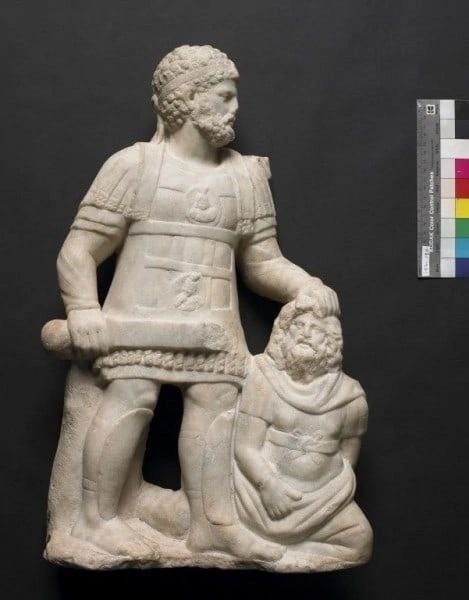 Hadrian killing a Jew. A.D. 135
Hadrian killing a Jew. A.D. 135
Greaves for Gladiators
Greaves were widely used among gladiators - provocateurs, Thracians, murmillo, and others. The general appearance of the greaves and their quantity varied for each type of gladiator. For example, the Thracians always had two, they were long and protected the knees. This is related to the size of the Thracian shield, which did not cover the kneecaps in the fighting stance. At the same time, provocateurs, who wore large shields, had only one short greave with an open knee. All archaeological finds, attributed as gladiatorial, are made of bronze alloys and richly decorated. There were also quilted greaves, which could be worn separately or together with metal greaves.
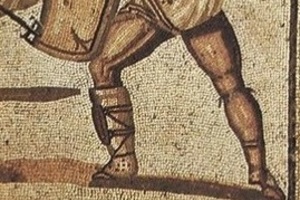 Fragment of a floor mosaic with a metal greave on top of a quilted one. Nennig on the Moselle. Germany. Roman villa. Mid-3rd century AD
Fragment of a floor mosaic with a metal greave on top of a quilted one. Nennig on the Moselle. Germany. Roman villa. Mid-3rd century AD Greaves for Greeks
As mentioned above, greaves first appeared in Ancient Greece and passed from hoplite warriors to the Romans. The Greek hoplon shield did not protect the legs, which led to the appearance of greaves in the Greek army.
Reenactment
Greaves are perfect for reconstructing the images of a gladiator, horseman, hoplite, or centurion. Legionnaires of the Empire era also wore greaves, but here the reenactor should be careful - the appearance of one greave on the left leg is characteristic of a later period legionnaire and is relevant from the 2nd century AD.
Attention should be paid to the type of greaves: the area of protection (with or without a knee), the material (almost everywhere - bronze), the quantity (many warriors wore only one greave). It is also important to create greave padding, as it is incorrect and impossible to wear metal armor on bare skin. Wrappings, fabric or leather linings, glued inside the greave, or another quilted greave (acceptable when reconstructing the image of a gladiator) can serve as damping details.
Related topics
Hoplite, Legionnaire, Centurion, Gladiator, Ala, Scutum, Hoplite, Hoplon
Literature
A. E. Negin. Roman ceremonial and tournament weapons. 2010
M.C. Bishop. Roman Plate Armour. Osprey Elite, 2022

 Roman Army Gallery
Roman Army Gallery






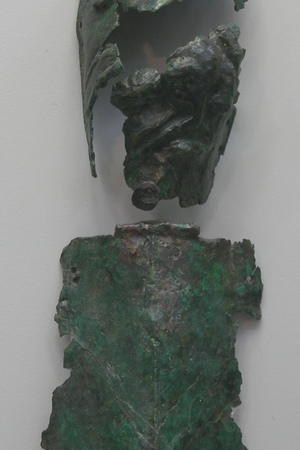 Composite bronze greave with the image of Pegasus. Courtesy Römisches Museum, Augsburg-D. 2nd century AD
Composite bronze greave with the image of Pegasus. Courtesy Römisches Museum, Augsburg-D. 2nd century AD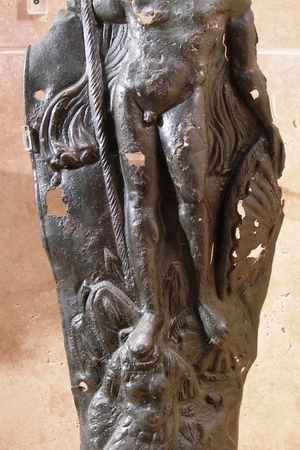 Greave with the image of Mars from the Aquincum legionary fortress (Budapest-Hungary). Courtesy Aquincum Museum-Budapest-N. Bronze. 2-3 century AD
Greave with the image of Mars from the Aquincum legionary fortress (Budapest-Hungary). Courtesy Aquincum Museum-Budapest-N. Bronze. 2-3 century AD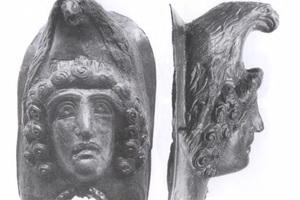 Knee pads (part of a composite greave) from Bad Auch-Altenburg (Brygeiion, Carnuntum). Lower Austria. Bronze. Munich, Prehistoric State Collection, Inv. no. 1981, 3198. Late 2nd, early 3rd century AD
Knee pads (part of a composite greave) from Bad Auch-Altenburg (Brygeiion, Carnuntum). Lower Austria. Bronze. Munich, Prehistoric State Collection, Inv. no. 1981, 3198. Late 2nd, early 3rd century AD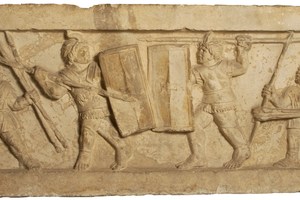 A fragment of a bas-relief with a warrior in one greave. The main Archaeological Museum of Abruzzo-Chieti (dell'Abruzzo-Chieti). 1st century BC
A fragment of a bas-relief with a warrior in one greave. The main Archaeological Museum of Abruzzo-Chieti (dell'Abruzzo-Chieti). 1st century BC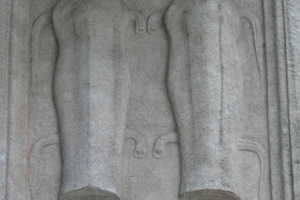 Bas-relief with the image of two greaves that are attached to buckles. Cortesia Musei Civici di Reggio Emilia. 1st century BC
Bas-relief with the image of two greaves that are attached to buckles. Cortesia Musei Civici di Reggio Emilia. 1st century BC

 Gladiator Gallery
Gladiator Gallery






